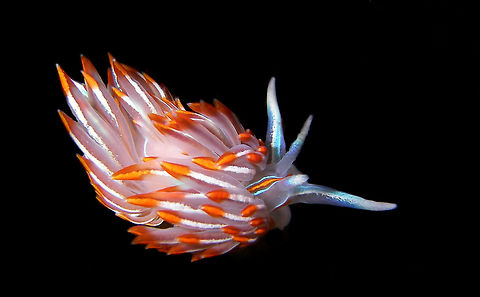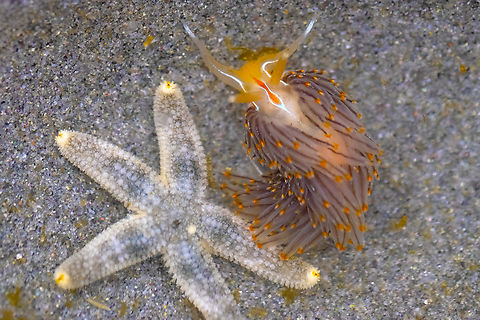
Appearance
The species grows to be about 50 mm, or about 2 inches. The color of this nudibranch varies from one locality to another, but it is always easily recognizable by the orange stripe along its back.It is often confused with the Caloria Indica, though differs from it by the having a larger number of branches, creating a dense, fur-like pattern.
This slug has been also used in several studies about Beta thymosins.

Distribution
This nudibranch lives from Kodiak Island, Alaska, to Punta Eugenia, Mexico.The species has also been observed in Bahia de los Angeles, Gulf of California, and in Japan and along the South East Indian Coast.
Habitat
It can be found in various habitats, including the intertidal zone of rocky shores, but also in bays and estuaries.References:
Some text fragments are auto parsed from Wikipedia.